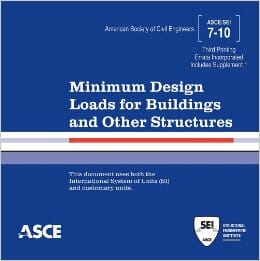News
What does the wind speed increase in ASCE 7-10 mean for design loads?
 The American Society of Civil Engineers (ASCE) Structural Engineering Institute (SEI) publishes Minimum Design Loads for Buildings and Other Structures (ASCE/SEI 7-10), which describes wind load design methods and is the basis for most building codes in the United States. ASCE 7-10 includes wind speed maps for locations throughout the country.
The American Society of Civil Engineers (ASCE) Structural Engineering Institute (SEI) publishes Minimum Design Loads for Buildings and Other Structures (ASCE/SEI 7-10), which describes wind load design methods and is the basis for most building codes in the United States. ASCE 7-10 includes wind speed maps for locations throughout the country.
Engineers who were previously accustomed to the wind speeds in ASCE 7-05 discovered that the wind speeds in the newest revision were substantially higher. Why? The answer comes down to two things: return period and load combination factors.
The return period is a statistical measure of the average period of time expected to pass between similar events. When climatologists talk about a 100-year flood, they mean a flood whose severity is such that one expects to witness it only once every 100 years on average. Similarly, wind engineers speak of return period for wind events. In this case, it’s the highest wind speed that is sustained for 3 seconds, measured 33 feet (10 meters) above the ground in open country. The wind speed map in ASCE 7-05 has a 50-year return period. This is the basis regardless of building importance/risk category, which is handled by a factor. ASCE 7-10 takes a different approach and presents wind speed maps with return periods of 300, 700, and 1700 years for different importance/risk categories directly.
Based on this description it might appear that a typical building went from a 50-year design wind load to a 700-year design wind load. In fact the typical building in ASCE 7-05 was designed for much more than a 50-year event by application of the strength design load combination factors. The factor that maximizes wind load in the basic combinations is 1.6. In ASCE 7-10 this factor goes to 1.0. Wind load is a function of wind speed squared, so effectively a factor of 1.6 on wind load is about 1.26 on wind speed. If you multiply that times the ASCE 7-05 wind speed map you get about the same speeds as are on the ASCE 7-10 map. So running the calculations via the two versions of the code gets you the same answer.
Many engineers may have been shocked to see the new wind speeds in ASCE/SEI 7-10. But peering beneath the surface and discovering how those wind speeds translate into actual wind loads reveals that not much has really changed**. It’s more or less the same wind load, but expressed in a different way that more clearly reflects the intent of the code authors.
**The same cannot be said of the forthcoming changes to ASCE 7-16, but that’s another story…
